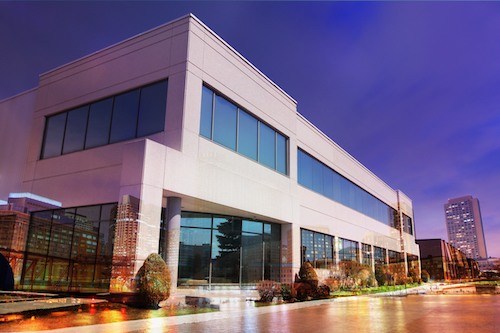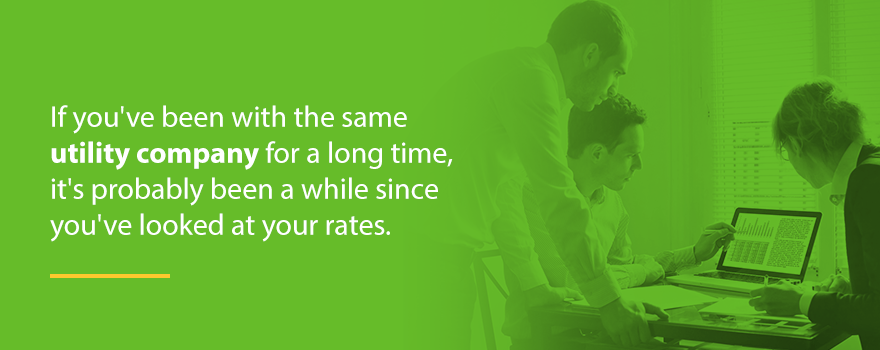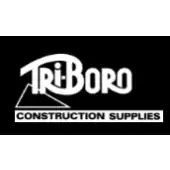

When you receive your electric bill each month, you probably wonder where all that energy goes. In commercial buildings, lighting takes an average of 17% of your energy use. Space heating, cooling, and ventilation combined take up about 30% of your energy use. With these items taking up a significant part of your energy costs, it’s natural to seek ways to cut down on expenses.
There are many avenues you can take to save on your electricity bill. The best way is to become more energy efficient. Efficiency saves you money on bills each month because you are using fewer resources. Energy efficiency is also good for the planet and is relatively low cost to pursue. Higher cost changes also pay for themselves through lower bills for years to come.
Enter your contact details, we’ll guide you to a solution, and you can get back to running your business!

When you try to lower your electric bill, anything you do to curb your energy usage can add up to significant savings. Even small changes that you might not even notice can save your company money. Here are six things you can do to help you lower your energy bill:
An energy audit is a great first step to lower your business’s electricity costs. With an energy efficiency audit, an energy professional will look at your building’s current usage and find ways to reduce it. They will spot air leaks and insulation issues, and recommend more efficient technology.
An after-hours audit you can do without the help of a professional. It involves checking what stays on and plugged in after everyone has gone home. To perform an after-hours audit, select a day at random and do not announce it beforehand. After everyone has left, wait an hour or two. Waiting allows anything that’s on a timer to power down, and computers to go into sleep mode. Then, take a walk around the premises and see what stays on. You might find computers running, technology plugged in, or lights left on.
You should identify some areas of improvement. From there, you may ask people to unplug and power down their devices each night. You may leave some reminders to turn off lights at the end of the day or put lights on motion sensors or timers. It may be helpful to repeat this experiment on a Friday night to see if anything can be shut off over the weekend.
When you’re looking to save energy, a few small changes to everyday routines can add up to big savings. Encouraging your team to make small efforts can be quite fruitful. Here are a few small behaviors your organization should consider:

Storing files on a local server means hosting a computer room. These computers draw a lot of energy and also produce a lot of heat. Server rooms need to be kept cool to protect the system from overheating. Switching to the cloud eliminates the need to host an IT room. Making the switch to cloud computing is also the perfect time to go paperless.
Besides saving paper and ink, moving paper files to the cloud can save you energy, too. Think about how often printers and copiers run throughout the day. This bulky equipment also stays plugged in, which can draw extra power when not in use. Going paperless can save you energy and save trees, too.
One of the best ways to cut down on energy costs is to use equipment that uses less energy. In general, energy efficient-technology will have a higher price point than less efficient models. However, the savings on your energy bill pay for these items quickly. Here is the best technology to try:
Your building itself could be the cause of some of your energy inefficiencies. An old, drafty building will cost more to heat and cool than one with good insulation. Landscaping and interior design can also have an impact on energy costs. Here are some ways you can save money by upgrading your building:

Enter your contact details, we’ll guide you to a solution, and you can get back to running your business!
If you are looking for ways to save on electricity in your business, one avenue is to switch electricity suppliers. If you’ve seen your rates go up recently, this can indicate that it’s time to switch to a new supplier.
If you’ve been with the same utility company for a long time, it’s probably been a while since you’ve looked at your rates. Electricity rates often change, so shopping for a new supplier can help you see if you are getting a competitive price. If you’ve been with the same supplier for a long time, you may not realize just how much the energy market has shifted.

Thanks to deregulation, energy companies can sell energy at a competitive rate. Electricity suppliers have become more transparent with their pricing. They have also curbed surprise increases in price after an introductory promotional rate. Additionally, suppliers can now source electricity from many producers, which can streamline rates and help you get the best deal.
A new energy provider can help you take advantage of some other cost-saving features. With commercial electricity procurement, you can get a dedicated energy consultant who understands your business and helps you to get the best deal on your energy. Your energy provider can also help you access a demand response program. Participation will earn your business money to limit energy usage during times of increased demand.
If you’re interested in making the switch, the best time to do so is when demand is low, and the weather is moderate.
Enter your contact details, we’ll guide you to a solution, and you can get back to running your business!
If you’re thinking about switching to a new electricity supplier, follow this five-step process:
The first step is to find which suppliers serve your area. Many states have a searchable list of competing producers that provide energy to your local utility. All you have to do is enter your ZIP code to get a list of energy providers in your area.
Once you see all the suppliers in your area, you can look for the best deals. You will be able to view all the current prices available in your ZIP code and compare them to the utility company rate. You’ll also see other information about that company’s fees and terms of use.
Once you’ve found the best deals, you’ll want to make sure the vendor is qualified. Check that they have the proper licensing in your area. Your state’s government should provide this license.
Remember that there is more to the price you’ll pay than the rate per Kilowatt hour. You’ll also have to compare fees and other costs. If you are unsure what all the fees associated with your current bill cover, this is an excellent time to learn. As you learn about these fees, you’ll better understand the rates available to you. See how the quotes compare to your current bill by looking at your average current energy consumption and adding fees. If you have yet to try more energy efficiency strategies, your new bill might get even lower as you work towards these goals.
After you’ve chosen the best deal, you can contact the supplier to make the switch. Don’t worry about notifying your utility company. Your new supplier will take care of the notification process. You’ll receive confirmation in the mail that your utility company verified the switch. You may have to pay a cancellation fee from your current provider if you switch before your contract ends.
If you're looking to find more ways to save on your electricity bill, Shipley Energy can help. We have over 85 years of providing excellent energy services to our customers. Whether you're interested in our commercial electricity solutions, or would like help developing an effective energy procurement strategy, trust Shipley Energy. Contact us online to learn more about our services.

The reps at Shipley Energy (Energy Objective) have helped me save more than a half-million dollars on my electric supply since the start of 2010. They have also helped me procure Demand Response payments from PJM of more than $77,000 over a six-year period. The service I have received from Shipley (...
Read moreThe reps at Shipley Energy (Energy Objective) have helped me save more than a half-million dollars on my electric supply since the start of 2010. They have also helped me procure Demand Response payments from PJM of more than $77,000 over a six-year period. The service I have received from Shipley (Energy Objective) has been personal and professional, and I feel like they have the best interests of my company in mind. It is for this reason that I have signed with them for electricity through 2023.
Read less
My favorite thing about Shipley Energy (Energy Objective) is working with a local, well-respected company. They look out for us by contacting us about renewal rates when the market is low, rather than waiting until my contract has ended and I’m out of time.
Glen Rexroth
I have been a Shipley Energy (Energy Objective) customer since 2008. A few years back, Tim Booth took over our commercial accounts. I am very happy that Tim is on our side all the time. I have never met anyone who can provide customer service the way he does. We are in the hospitality business ownin...
Read moreI have been a Shipley Energy (Energy Objective) customer since 2008. A few years back, Tim Booth took over our commercial accounts. I am very happy that Tim is on our side all the time. I have never met anyone who can provide customer service the way he does. We are in the hospitality business owning several hotels and a sports complex so we know what customer service means. Tim is not just finding us the best deal but also audits our invoices to make sure the rates are correct, helps us in understanding the market, and works through the complex contracts for us. He is always a supportive and very knowledgeable fellow. We have saved money in the six figures so far. We will always stick to our favorite company and especially our great friend Tim. I truly thank Tim Booth for the best help we can get for all energy needs. No one else can give the best rates and services like Shipley (Energy Objective). Crowne Plaza Harrisburg, Lancaster Host Resort and The Coliseum wish you the best.
Read less
I’ve been working with Shipley (EnergyObjective) since 2010 to procure my electricity supply in two utilities. Over four Met-Ed contracts, every price has been lower than the last. My rep audits my bills after each new contract, alerts me when the market is low, and makes the contracting process p...
Read moreI’ve been working with Shipley (EnergyObjective) since 2010 to procure my electricity supply in two utilities. Over four Met-Ed contracts, every price has been lower than the last. My rep audits my bills after each new contract, alerts me when the market is low, and makes the contracting process painless. He’s also available for any utility question I have, whether or not it’s about my supply contract. If you’re looking for a professional, courteous, hard-working energy partner, you can go pretty far with EnergyObjective.
Read less